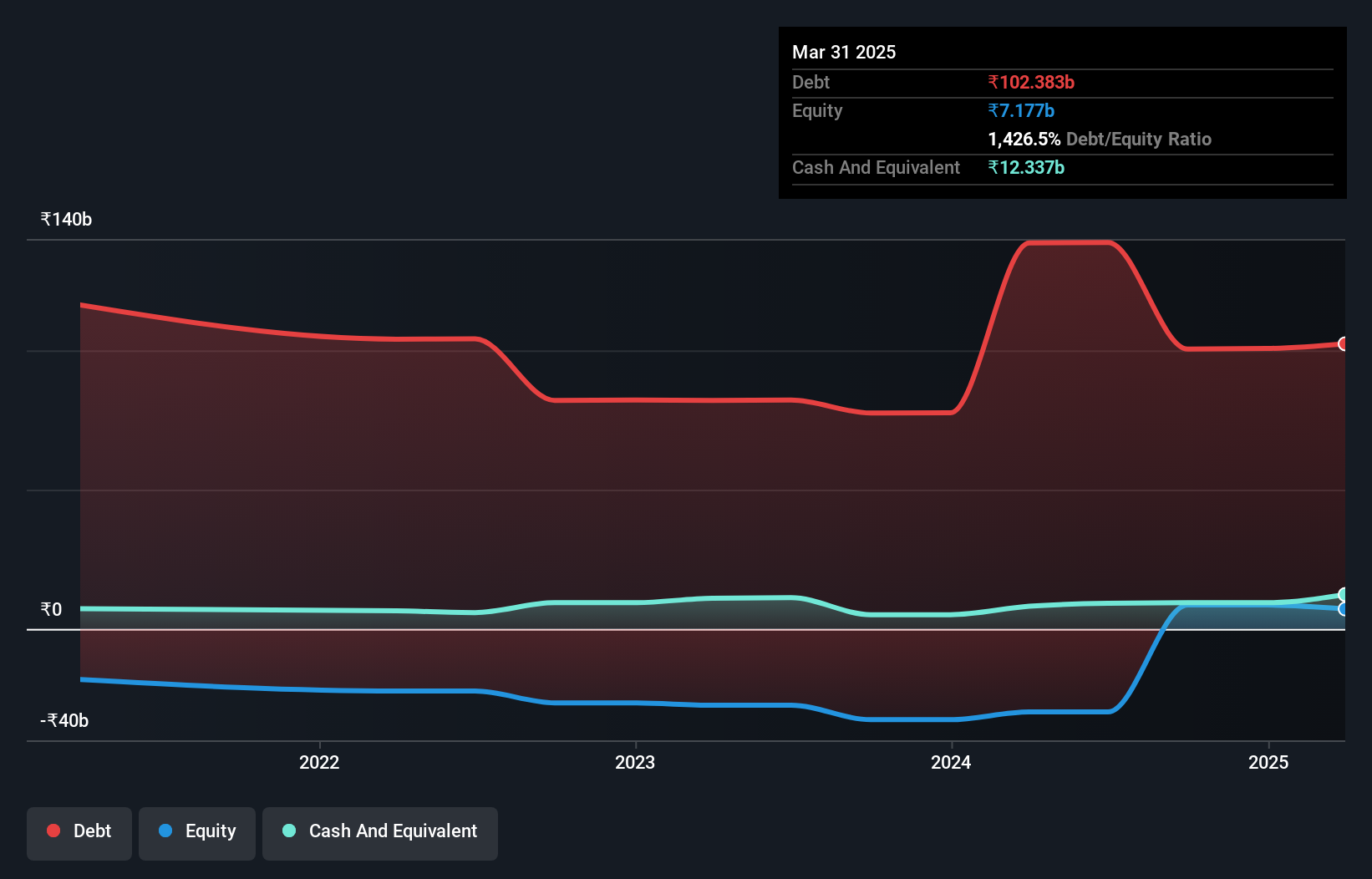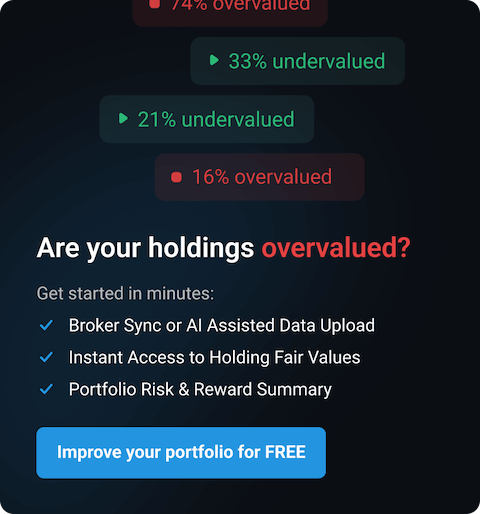- India
- /
- Construction
- /
- NSEI:GMRP&UI
These 4 Measures Indicate That GMR Power And Urban Infra (NSE:GMRP&UI) Is Using Debt Extensively
The external fund manager backed by Berkshire Hathaway's Charlie Munger, Li Lu, makes no bones about it when he says 'The biggest investment risk is not the volatility of prices, but whether you will suffer a permanent loss of capital.' When we think about how risky a company is, we always like to look at its use of debt, since debt overload can lead to ruin. As with many other companies GMR Power And Urban Infra Limited (NSE:GMRP&UI) makes use of debt. But the real question is whether this debt is making the company risky.
When Is Debt Dangerous?
Debt is a tool to help businesses grow, but if a business is incapable of paying off its lenders, then it exists at their mercy. In the worst case scenario, a company can go bankrupt if it cannot pay its creditors. However, a more frequent (but still costly) occurrence is where a company must issue shares at bargain-basement prices, permanently diluting shareholders, just to shore up its balance sheet. Having said that, the most common situation is where a company manages its debt reasonably well - and to its own advantage. When we examine debt levels, we first consider both cash and debt levels, together.
How Much Debt Does GMR Power And Urban Infra Carry?
As you can see below, GMR Power And Urban Infra had ₹102.4b of debt at March 2025, down from ₹138.5b a year prior. On the flip side, it has ₹12.3b in cash leading to net debt of about ₹90.0b.

How Strong Is GMR Power And Urban Infra's Balance Sheet?
According to the last reported balance sheet, GMR Power And Urban Infra had liabilities of ₹62.9b due within 12 months, and liabilities of ₹99.8b due beyond 12 months. Offsetting these obligations, it had cash of ₹12.3b as well as receivables valued at ₹17.3b due within 12 months. So its liabilities outweigh the sum of its cash and (near-term) receivables by ₹133.0b.
This deficit casts a shadow over the ₹75.9b company, like a colossus towering over mere mortals. So we'd watch its balance sheet closely, without a doubt. After all, GMR Power And Urban Infra would likely require a major re-capitalisation if it had to pay its creditors today.
See our latest analysis for GMR Power And Urban Infra
We use two main ratios to inform us about debt levels relative to earnings. The first is net debt divided by earnings before interest, tax, depreciation, and amortization (EBITDA), while the second is how many times its earnings before interest and tax (EBIT) covers its interest expense (or its interest cover, for short). Thus we consider debt relative to earnings both with and without depreciation and amortization expenses.
Weak interest cover of 0.69 times and a disturbingly high net debt to EBITDA ratio of 5.2 hit our confidence in GMR Power And Urban Infra like a one-two punch to the gut. This means we'd consider it to have a heavy debt load. The good news is that GMR Power And Urban Infra grew its EBIT a smooth 32% over the last twelve months. Like a mother's loving embrace of a newborn that sort of growth builds resilience, putting the company in a stronger position to manage its debt. There's no doubt that we learn most about debt from the balance sheet. But it is future earnings, more than anything, that will determine GMR Power And Urban Infra's ability to maintain a healthy balance sheet going forward. So if you want to see what the professionals think, you might find this free report on analyst profit forecasts to be interesting.
Finally, a company can only pay off debt with cold hard cash, not accounting profits. So the logical step is to look at the proportion of that EBIT that is matched by actual free cash flow. Over the last three years, GMR Power And Urban Infra actually produced more free cash flow than EBIT. That sort of strong cash generation warms our hearts like a puppy in a bumblebee suit.

Our View
We feel some trepidation about GMR Power And Urban Infra's difficulty level of total liabilities, but we've got positives to focus on, too. To wit both its conversion of EBIT to free cash flow and EBIT growth rate were encouraging signs. Taking the abovementioned factors together we do think GMR Power And Urban Infra's debt poses some risks to the business. While that debt can boost returns, we think the company has enough leverage now. There's no doubt that we learn most about debt from the balance sheet. However, not all investment risk resides within the balance sheet - far from it. For instance, we've identified 4 warning signs for GMR Power And Urban Infra (2 are potentially serious) you should be aware of.
At the end of the day, it's often better to focus on companies that are free from net debt. You can access our special list of such companies (all with a track record of profit growth). It's free.
New: Manage All Your Stock Portfolios in One Place
We've created the ultimate portfolio companion for stock investors, and it's free.
• Connect an unlimited number of Portfolios and see your total in one currency
• Be alerted to new Warning Signs or Risks via email or mobile
• Track the Fair Value of your stocks
Have feedback on this article? Concerned about the content? Get in touch with us directly. Alternatively, email editorial-team (at) simplywallst.com.
This article by Simply Wall St is general in nature. We provide commentary based on historical data and analyst forecasts only using an unbiased methodology and our articles are not intended to be financial advice. It does not constitute a recommendation to buy or sell any stock, and does not take account of your objectives, or your financial situation. We aim to bring you long-term focused analysis driven by fundamental data. Note that our analysis may not factor in the latest price-sensitive company announcements or qualitative material. Simply Wall St has no position in any stocks mentioned.
About NSEI:GMRP&UI
GMR Power And Urban Infra
Engages in the energy, urban infrastructure, and transportation businesses in India.
Reasonable growth potential and fair value.
Similar Companies
Market Insights
Community Narratives





